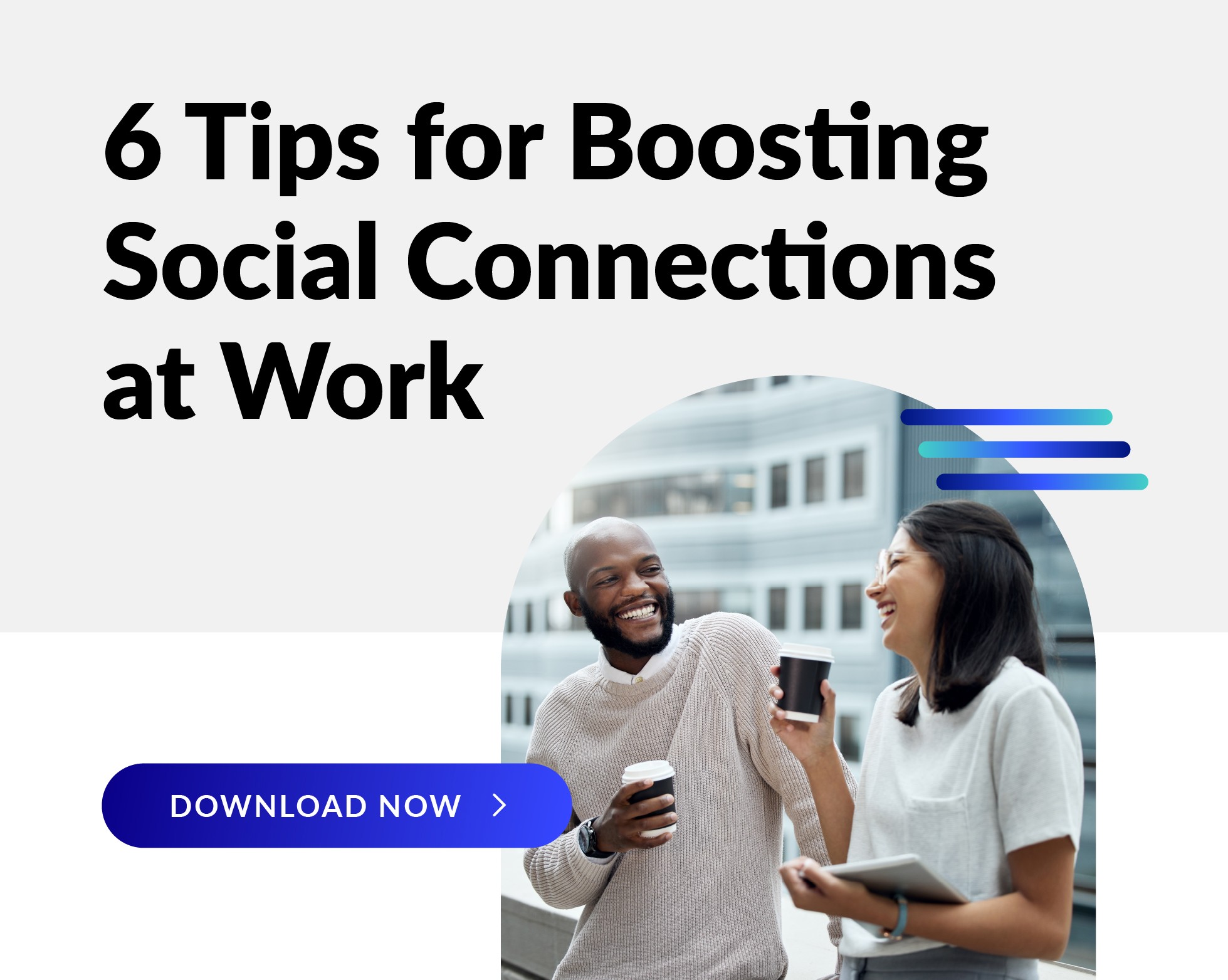 States are now slowly relaxing stay-at-home orders, and this means employers must make decisions about whether, when and how to open workplaces. There are many factors to consider. In this blog article, we summarize some of the current thinking and guidelines around reopening that puts the health, well-being, and safety of your employees first.
States are now slowly relaxing stay-at-home orders, and this means employers must make decisions about whether, when and how to open workplaces. There are many factors to consider. In this blog article, we summarize some of the current thinking and guidelines around reopening that puts the health, well-being, and safety of your employees first.
Physical Wellness Considerations
Perhaps the most important factor in safely reopening workplaces is how an employer will protect the physical well-being of its employees. Throughout this crisis, employees have looked to their employer as a trusted source of information, so they will be relying on you to have a thoughtful and thorough plan for opening the doors back up.
Establish protocols employees must follow.
- First and foremost, if an employee—or family member of an employee—is experiencing symptoms, he or she should not report to work.
- Ensure that handwashing protocols and other Centers for Disease Control and Prevention (CDC) recommendations for helping to prevent the spread of COVID-19 are prominently displayed around the workplace.
- Determine policies for face coverings and mask-wearing for employees as well as clients, customers, contractors, vendors, and anyone else who may enter the workplace.
- Establish a protocol to handle situations in which an employee or an employee’s family member contracts COVID-19 after returning to work. Which co-workers should be notified?
- Make sure that appropriate leave policies are in place to support workers who become ill or need to care for sick family members.
Establish policies for the office.
Employers will need to think through a host of issues to ensure that their physical space is safe, and so much will depend on location and type of facility. At a minimum, consider the following:
- Create an enhanced cleaning and disinfecting protocol.
- Make hand sanitizer widely available throughout the workplace.
- Reconfigure all workspaces, including common areas, to maintain social distancing.
- Suggest traffic flow guidelines to minimize close interactions around the office.
- Limit the number of people in the building by enforcing staggered shifts or A/B days.
- Maintain a single point of entry for office buildings.
- Provide new cafeteria protocols to limit interactions, such as staggering lunch times.
- Optimize airflow wherever possible.
Determine the right level of screening and testing.
Depending on geography and the nature of work—for example, manufacturing versus an office setting—employers may wish to screen and/or test employees. According to the Equal Employment Opportunity Commission (EEOC), both are legal.
Screening
- Symptom assessment: Employees complete a standardized questionnaire asking about exposure risks to the virus before entering the building. Partner with Human Resources to develop the questionnaire, referring to the CDC for their suggested list of questions. Establish a procedure for collecting and disposing of questionnaires to maintain privacy.
- Body temperature check: Employees have their body temperature taken before entering the building. The CDC considers a reading of greater than or equal to 100.4ᵒ F a fever, but it’s possible that those contagious with COVID-19 will not have a fever. Testers should have proper protection and maintain social distancing. Results should not be shared publicly.
Testing
Employers will need to determine whether they will administer tests or if they will advise employees to get tested on their own. Insurance plans are required to cover the cost of COVID-19 testing. And, of course, everything depends on the availability of tests in a given geographic area. There are two types of tests available:
- Viral (SARS-CoV-2): A sample is taken by swabbing the inside of the nose or mouth. It identifies whether someone currently has an infection with SARS-CoV-2, the virus that causes COVID-19. A negative test result means the person does not have COVID-19 at the time of testing; however, it is possible to test positive the next day.
- Antibody (Serology): This blood test looks for antibodies—proteins that can fight off infections—in the blood. If antibodies are found, that means there has been a previous infection. Note that it can take one to three weeks for a person to make antibodies after symptoms occur, and not everyone will make antibodies after infection.
For complete testing options and availability, employers should check with their state or local health department. Chosen laboratory vendors must be Clinical Laboratory Improvement Amendments (CLIA)-certified and meet applicable regulatory requirements or have a certificate of waiver.
Don’t forget about routine care and management of chronic conditions.
Many individuals have been postponing elective surgeries and preventive care for fear of contracting the virus. While it is still good to be cautious, delaying necessary care can lead to more serious problems down the road. Encourage employees to take advantage of telemedicine for routine doctor’s appointments and weigh the pros and cons of having invasive procedures. Employees should also make sure their children continue to receive well care, including necessary vaccinations.
Emotional Wellness Considerations
We are experiencing an unprecedented collective trauma, so, understandably, some employees may not be emotionally ready to return to work. Others will need extra support to feel comfortable. As this recent Thrive Global article states, “we can get everything else right — masks, hand sanitizers, social distancing, elevator protocols, redesigned office plans, everything — but if we don’t address how the stress and uncertainties of the new and next normal affect us as people, it’s going to affect not just our health and productivity but the health of our businesses, too.”1
While considering returning to the workplace, keep these mental wellness tips in mind:
- Be flexible with employees who are not ready to return. If work-from-home arrangements have been effective thus far, consider extending that option or making it a permanent solution. Twitter just did, and other companies are following suit.
- Consider the caregiving aspect of the situation. While you may be ready to have employees return to work, circumstances may not allow for them to come back to the workplace so easily. For example, long-term closures of schools and childcare programs may require some employees to remain at home to care for their children.
- Make sure mental health resources are available. For example, along with the mental wellness solutions we already had in place, we recently made mental health podcasts available to all our WebMD ONE clients and their organizations. Other mental health resources you may want available at your company include Employee Assistance Programs (EAPs), onsite counselors, meditation apps or classes, tools to help with stress and increasing resilience, or other solutions.
- Encourage employees to take paid time off. It seems strange because we can’t really travel anywhere, but taking paid time off to refresh and recharge is essential for mental health.
- Provide support for those who have been impacted financially, including employees whose spouse or family members have lost jobs. The link between financial stress and physical and emotional health is real.
It’s a lot to think through. There’s no playbook to follow, and this is certainly not an exhaustive list. But what is certain is that tried and true principles can help guide a successful reopening strategy: health and safety first; communicating with employees in a caring, honest, and transparent manner; and making sure people have the health and well-being resources they need to thrive in a very different world. How employers handle this moment will have effects on their employees, clients, and businesses for many years to come.
Additional Reputable Sources Employers May Find Helpful:
- Centers for Disease Control: Coronavirus (COVID-19) & Evaluating and Testing Persons for Coronavirus Disease 2019 (COVID-19) & Interim Guidance for Businesses and Employers Responding to Coronavirus Disease 2019 (COVID-19)
- Equal Employment Opportunity Commission: What You Should Know About COVID-19 and the ADA, the Rehabilitation Act, and Other EEO Laws
- Food and Drug Administration: Coronavirus Disease 2019 (COVID-19) & Fraudulent Coronavirus Disease 2019 (COVID-19) Products
- Occupational Safety and Health Administration: COVID-19
- World Health Organization: Strategic preparedness and response plan
- MedicineNet: How Do the COVID-19 Coronavirus Tests Work?
WebMD.com Resources:
- White House Reemphasizes COVID-19 Testing Capacity
- Coronavirus Testing
- Antibody Testing for COVID-19
- COVID-19 Antibody Testing Brings Cautious Hope
- COVID-19 Drug Testing: Where We Stand
Related Content:
- Blog: Workplace Well-Being Programs Are Key to Keeping People Connected Right Now
- Blog: Supporting Mental Well-Being in This Moment
- Webinar: Breaking Down the Stigma of Mental Health in the Workplace

